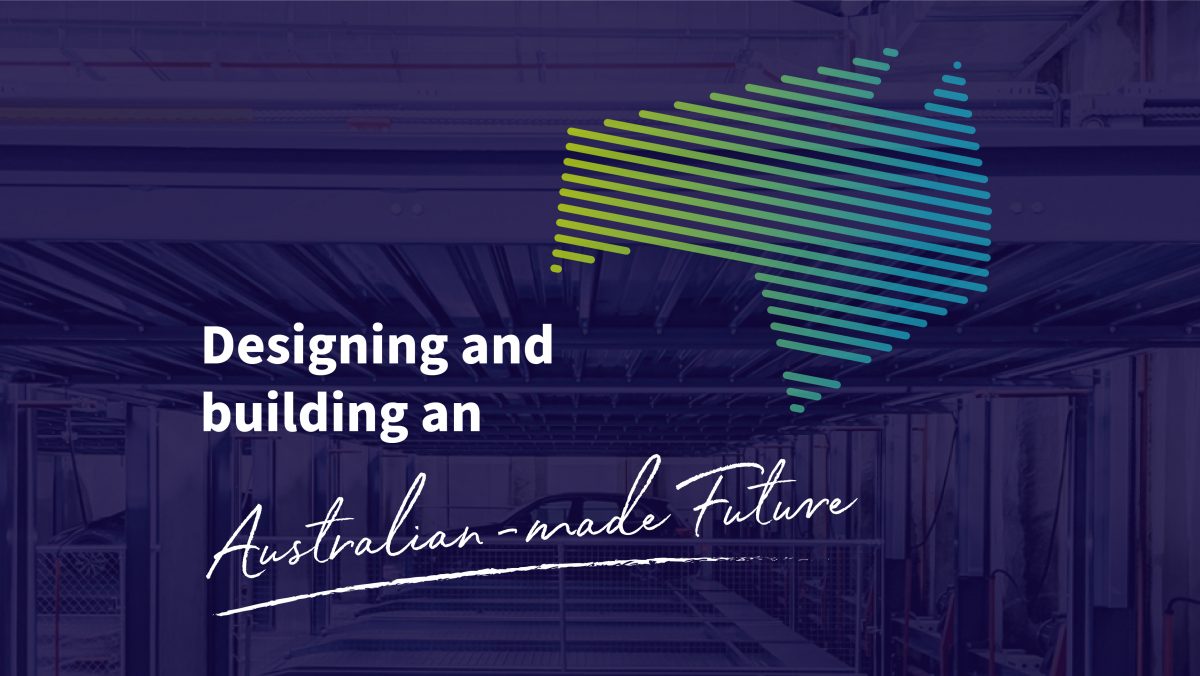
How an engineering partnership shows how home-grown design and built products can be part of a renaissance in Australian manufacturing.
When SOTO Consulting Engineers Project Engineer Dylan Roache was scrolling through the specifications for an overseas-designed and fabricated car park lift, he struck a significant dilemma. The idea was sound: using an off-the-shelf design widely used overseas as a solution for the headache architects were facing in balancing providing adequate parking for high-rise buildings with land-use constraints and construction costs.
The lift used Korean steel, which has different standard section sizes. Because section sizes are rated for specific strength values, certifying the design becomes an issue.
“By the Korean standard, a certain steel section can pass a test, but when we put it in an Australian context, it’s not off-the-rack certified,” Mr Roache says. “You look at it as an engineer responsible for compliance and think, I can’t certify that.”
The answer would seem simple: just make the lift in Australia, using Australian steel and other locally manufactured components. However, while SOTO and car lift manufacturer Hercules Carparking Systems have developed a partnership that is tackling the problem and providing a locally made solution for high-rise developments, the initial challenges are symptomatic of the issues in Australian manufacturing.
The decline in Australian manufacturing
If you’re old enough, you would likely remember the names of several Australian-made goods. From cars to textiles and food processing, Australian brands were well known in a thriving manufacturing sector. Fast-forward four or five decades, and Australian manufacturing’s contribution to gross domestic product (GDP) has fallen from almost 30 per cent in the 1950s and 1960s to less than 6 per cent in 2019 — considerably lower than other OECD countries and the OECD average.
That sobering statement is from the Senate Economics References Committee final report on the Australian manufacturing industry, tabled in February this year (2022). With manufactured goods accounting for more than two-thirds of world merchandise trade, a country that cannot make and export goods will be shut out of most trade. An additional powerful argument is being self-sufficient. The Economics References Committee notes that a 30-year downward trend puts Australia last among all OECD nations for manufacturing self-sufficiency, making us the most underdeveloped manufacturing sector of any industrial country in the world.
While manufacturing still accounts for more than 800,000 jobs, the implication of a lack of self-sufficiency is lost capability, opportunity, and prosperity. When supply chains are disrupted by conflict, disaster, or pandemics, heavy reliance on imported goods can shutter entire industries and leave the nation dangerously exposed to economic freefall. COVID-19 and the war in Ukraine have certainly shone a spotlight on these threats.
What goes down must come up
Yet, all the research poured into the issue of Australian manufacturing points to opportunities. Government and industry research highlights that while the production phase of manufacturing is important, more value can be gained from developing capability in pre-and post-production activities. While focussing on research and development and design on the front end supports the industry to move to high-value industries with specialised production processes.
Local solutions to local challenges
Hercules Carparking Systems designs and builds vehicle parking and storage systems for residential and commercial buildings. Their solution involves a lift that transports cars to and from the car park where they are stacked vertically, increasing the parking capacity over a traditional multi-level car park. Increasingly stringent regulations and building codes, the complexity of many development sites, and the push for increasing urban density mean that the traditional ways of designing a building are no longer suitable, and underground parking is a glaring example.
For Hercules, the business proposition was to buy the lift components overseas and have them modified and certified for Australian buildings or develop a solution that could be manufactured locally. A partnership with SOTO means they can do just that, providing a bespoke solution for buildings designed and optimised for the site and built to Australian Standards.
“If you want to play in the Australian space, you need to have an Australian certified structure. And the only way to have an Australian certified structure is having an Australian engineering service provider certify it,” Mr Roache says. “If you’re going to the trouble of getting us to certify an existing design, it makes business sense to do the complete design, and then that IP is yours.
The SOTO and Hercules partnership now enables architects and developers to consider car stackers in the building design, knowing the stackers, design, components, fabrication, and installation provide long-term value. The partnership also points to how local manufacturing can focus on the high value-add products, potentially contributing to the renaissance in local manufacturing capabilities and opportunities.
“From first principles, everything has been redesigned from scratch,” Mr Roache says. “The other critical part is that you want to be able to specify Australian suppliers. There’s no point in designing a system if all your parts have to come from Korea or Europe.
“What we’re doing is we’re designing the system for 25 years plus. That’s the perspective we take to make sure that we can design products that are reliable for many years. We’ve come up with a business case for why the upfront investment in local design, manufacture and compliance pays off long term.”


